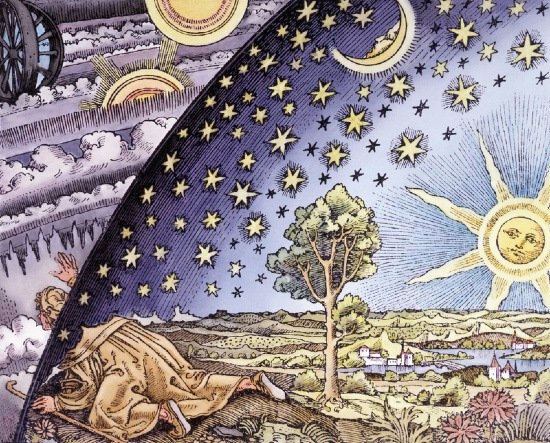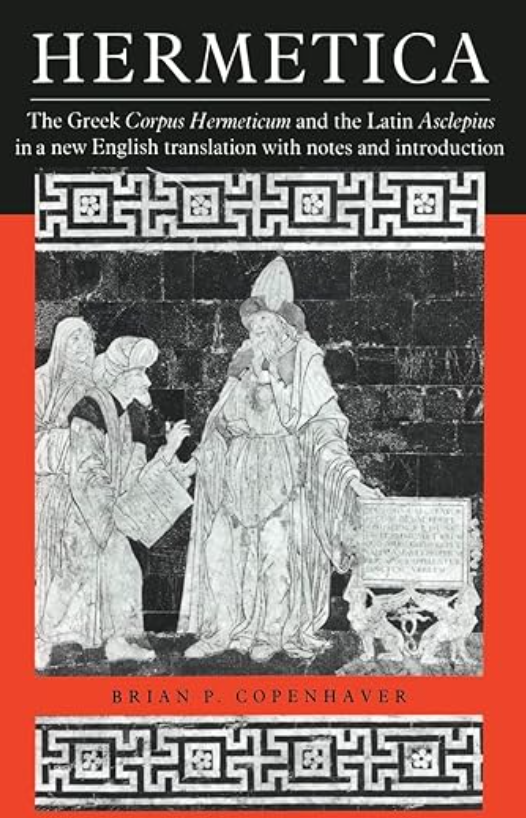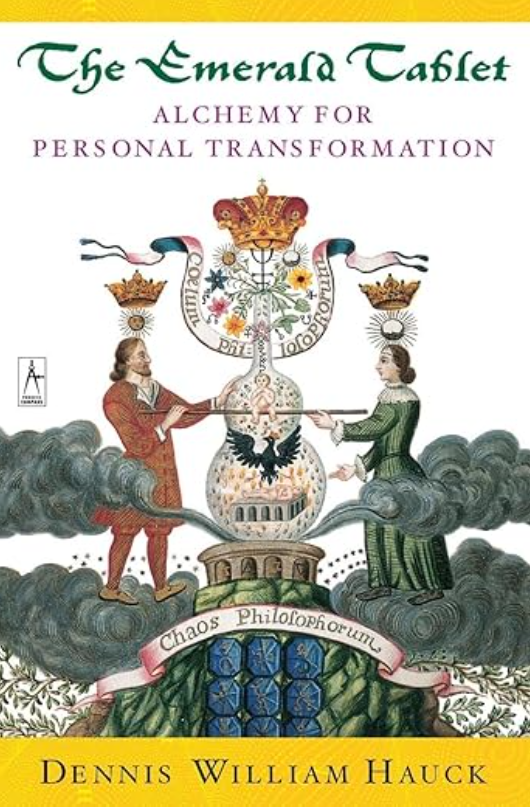
Hermeticism FAQs
Hermeticism vs Hinduism?
Mapping the Soul's Journey to the Divine
Hermeticism and Hinduism are two of the world’s most profound spiritual systems—each offering symbolic maps, sacred practices, and paths of inner transformation. Though they arose in different parts of the world, both traditions explore the essential questions of life: Who am I? What is the nature of reality? How do I return to the Source?
This page explores their points of connection and contrast, offering insight for those drawn to ancient wisdom and the path of self-realization.
-
An ancient spiritual philosophy from Egypt and Greece
Based on texts like the Corpus Hermeticum and The Kybalion
Teaches that the universe is mental and governed by 7 universal laws
Emphasizes self-mastery, symbolic understanding, and alignment with cosmic law
-
One of the world’s oldest living spiritual traditions, originating in the Indian subcontinent
Rooted in the Vedas, Upanishads, Bhagavad Gītā, and many schools of philosophy
Teaches that the soul (ātman) is one with the Absolute (Brahman)
Includes diverse practices such as yoga, mantra, ritual, and devotion to deities
Historical Context of Hermeticism and Tibetan Buddhism
Hermeticism and Hinduism are among the world’s most ancient spiritual lineages, each arising from distinct cultures, cosmologies, and sacred languages. Yet both traditions—one Western, one Eastern—have stood the test of time because they offer something far more than belief systems: they offer maps of reality and methods for spiritual transformation.
Hermeticism: The Esoteric Tradition of the West
Hermeticism emerged in Hellenistic Egypt, particularly in Alexandria during the first few centuries CE, where Egyptian mystery teachings blended with Greek philosophy (especially Platonism and Stoicism), Chaldean astrology, and Jewish mysticism. The foundational texts—known collectively as the Corpus Hermeticum—were framed as dialogues between Hermes Trismegistus (a syncretic figure combining the Egyptian god Thoth and the Greek Hermes) and his disciples.
This sacred science taught that:
The universe is mental in nature (All is Mind)
Reality is structured by universal principles (e.g., Correspondence, Vibration, Polarity)
The human being is a microcosm of the macrocosm, capable of awakening and returning to divine unity through inner work
Although Hermetic teachings were suppressed during the rise of orthodox Christianity, they survived underground in alchemical manuscripts, Kabbalistic works, and later in Renaissance and Rosicrucian circles. Hermeticism was revitalized again in the 19th and 20th centuries by esotericists like Eliphas Levi, Blavatsky, Manly P. Hall, and the Hermetic Order of the Golden Dawn—and today continues through modern initiatory schools.
Hinduism: The Living Tradition of the East
Hinduism is not a single religion but a vast spiritual civilization that stretches back over 4,000 years, with roots in the Vedic culture of the Indus Valley. Its earliest sacred texts—the Vedas—established a cosmology that celebrated the divine order (ṛta) through mantra, fire ritual, and communion with the gods.
Later texts like the Upanishads introduced a more interiorized and philosophical perspective, focusing on:
The identity of the self (ātman) with the Absolute (Brahman)
The illusory nature of the material world (māyā)
The cycle of birth, death, and rebirth (samsāra) and the possibility of liberation (moksha)
Over millennia, Hinduism evolved to include devotional (bhakti) movements, yogic disciplines, and tantric traditions—offering multiple valid paths suited to different temperaments and karmic conditions. Today, it remains a living tradition practiced by millions and studied by seekers worldwide for its depth, diversity, and spiritual psychology.
Parallel Paths of Initiation
While Hermeticism was preserved through hidden currents and initiatory schools, Hinduism developed through living transmission—passed from teacher to student in open and devotional contexts. Despite this difference, both traditions offer initiatory frameworks: symbolic systems, spiritual disciplines, and sacred cosmologies designed to awaken the individual to their divine essence.
In the 20th and 21st centuries, these traditions have come into greater conversation, thanks to spiritual thinkers like:
Swami Vivekananda and Sri Aurobindo, who introduced Hindu philosophy to the West
Aldous Huxley, Alan Watts, and Mircea Eliade, who explored universal mysticism
Blavatsky and Theosophical thinkers, who sought to unify Eastern and Western wisdom
Today, many modern spiritual seekers find resonance in both traditions—turning to Hinduism for embodied practice and devotional depth, and to Hermeticism for symbolic mastery and metaphysical structure.
Key Comparisons of Hermeticism vs. Hinduism
View of the Self and the Divine
Hermeticism: Teaches that the self is a divine spark (as above, so below). Union with the All comes through gnosis and alignment with universal law.
Hinduism: Teaches that the true self (ātman) is already Brahman, the unchanging Absolute. Realization (moksha) comes through yoga, devotion, or knowledge (jñāna).
Cosmology
Hermeticism: Describes the cosmos in terms of planes of existence (mental, astral, physical), sacred geometry, and correspondences. The universe is symbolic and fractal.
Hinduism: Offers vast cosmologies including lokas (realms), chakras, the trimūrti (Brahma, Vishnu, Shiva), and cycles of creation (yugas). Time is cyclical and eternal.
Path to Liberation
Hermeticism: Follows a path of initiation, inner alchemy, and mastery of self and nature. Liberation comes through personal effort and inner knowing.
Hinduism: Offers multiple paths to liberation—karma yoga (selfless action), bhakti yoga (devotion), rāja yoga (meditation), and jñāna yoga (knowledge).
God, Deities, and Divine Relationship
Hermeticism: Honors the impersonal divine principle—the All—and may invoke planetary archetypes or forces symbolically in ritual.
Hinduism: Involves devotion (bhakti) to personal deities like Krishna, Shiva, Lakshmi, etc.—seen as aspects or expressions of Brahman.
Scripture and Transmission
Hermeticism: Transmitted through mystery schools and texts interpreted symbolically.
Hinduism: Preserved through a vast canon of scriptures, chants, oral teachings, and commentaries spanning thousands of years.
Key Similarities of Hermeticism vs. Hinduism
All is Divine
Both teach that everything is sacred—Hermeticism through the Principle of Correspondence and Mind, Hinduism through the unity of ātman and Brahman.
Symbolic Reality
Hermeticism uses correspondences and geometry; Hinduism uses stories, deities, yantras, and mythology as expressions of eternal truths.
Inner Transformation as the Path
Both traditions emphasize meditation, purification, ethical living, and alignment with truth as core to spiritual evolution.
Rebirth and Cycles
Hermeticism acknowledges rhythms and cycles through the Principle of Rhythm and reincarnation-like concepts. Hinduism teaches karma, rebirth, and the endless cycles of time (samsāra).
Why Study Both?
Studying both Hermeticism and Hinduism allows you to access the East and West’s deepest metaphysical traditions, and begin to see the universal truths that underlie them.
Hermeticism offers a symbolic, structured map of the universe and the laws that govern it. Hinduism offers a multi-dimensional, living framework for understanding consciousness, divinity, and devotion.
By studying both, you gain:
A wider vocabulary for the soul’s journey
A deeper understanding of symbolic vs. devotional frameworks
Greater discernment between universal truth and cultural form
You don’t need to choose one over the other. You can study both with reverence, allowing each to deepen your inner work, expand your spiritual insight, and help you remember who you really are.
🔍 Explore More Esoteric Comparisons
Curious how Hermetic thought compares to other spiritual traditions? Continue your journey of discovery:
What Is Hermeticism? (Beginner’s Guide) →
Hermeticism vs Christian Mysticism →
Hermeticism vs Law of Attraction →
Note: Spiritual exploration of various thought systems isn’t to decide which one is “better” or more correct—it’s to expand your lens. Each tradition offers a unique language for describing the journey of the soul, the structure of the universe, and the human potential for awakening.
In true Hermetic fashion, learning from multiple wisdom traditions is a path to greater discernment, wholeness, and integration. Let these teachings be mirrors, not rules—tools that help you clarify your own experience of the divine.
Recommended Texts for Students of Hermeticism
-

Corpus Hermeticum
A collection of dialogues between Hermes and his disciples, covering topics such as the nature of the divine, the creation of the universe, and the path to spiritual enlightenment. It explores the relationship between the divine mind and human consciousness, offering a path toward spiritual awakening.
-

Emerald Tablet
A cryptic and poetic text that contains some of the most famous Hermetic aphorisms, including "As above, so below." This phrase encapsulates the Hermetic belief in the interconnectedness of all things and the idea that the microcosm (human experience) reflects the macrocosm (the universe).
-

The Kybalion
This text presents the foundational teachings of Hermetic philosophy. It outlines the 7 universal principles that govern the nature of reality, providing insight into the workings of the universe with practical guidance for spiritual growth, self-mastery, and understanding the deeper truths of existence.
Study with an Authentic Hermetic Lineage…
The tools, healings and secrets of the ancient mystery school traditions were once veiled, known only to the privileged elite—royalty, artists, scholars.
In these remarkable times, the doors are now open to the public, with wisdom unveiled for all who seek to take the journey on the path of self-mastery that has illuminated the minds of history's brightest souls…
Leonardo DiVinci, Nicola Tesla, David Bowie… These are just some of the remarkable people who studied in the mystery school tradition.
Are you ready?

